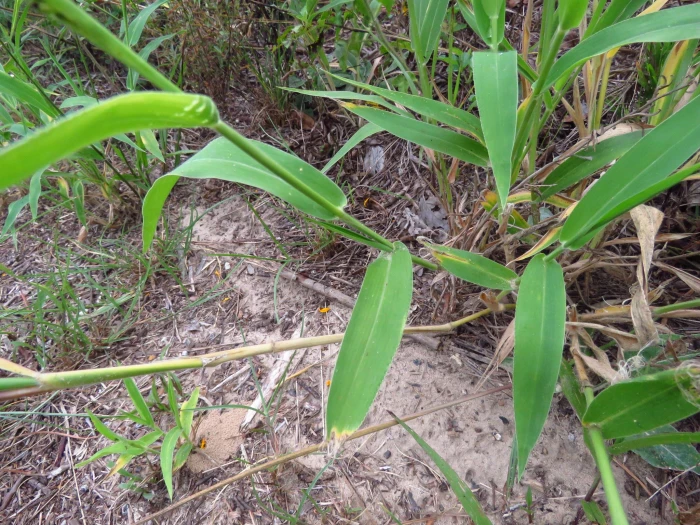Texas Signalgrass
(Urochloa texana)
Texas Signalgrass (Urochloa texana)
/
/

© Annika Lindqvist
CC BY 4.0
Image By:
© Annika Lindqvist
Recorded By:
Copyright:
CC BY 4.0
Copyright Notice:
Photo by: © Annika Lindqvist | License Type: CC BY 4.0 | License URL: http://creativecommons.org/licenses/by/4.0/ | Uploader: annikaml | Publisher: iNaturalist |

























Estimated Native Range
Climate Requirements
| • Precipitation | 8" - 70" |
| • High Temp. | 73°F - 101°F |
| • Low Temp. | 18°F - 66°F |
Summary
Urochloa texana, commonly known as Texas signalgrass, is a perennial grass native to prairies, open woodlands, and roadside areas in the southern United States, particularly Texas, Louisiana, and Oklahoma. It typically forms dense clumps and can reach heights of 1 to 3 feet. Texas signalgrass has a moderate growth rate and is known for its ability to thrive in hot climates. The plant features narrow, flat leaves and produces small, inconspicuous flowers during the summer months. While not particularly showy, its seed heads are distinctive, with seeds arranged in a zigzag pattern along the branches.
Texas signalgrass is valued for its drought tolerance and is often used for erosion control, as well as in native plant gardens and restoration projects. It is adaptable to a variety of soil types but prefers well-drained soils and can grow in both full sun and partial shade. This grass is low-maintenance, requiring minimal water once established. However, it can become weedy and may spread aggressively if not managed properly. In regions where it is not native, it has the potential to become invasive, so caution is advised when planting it outside its natural range.CC BY-SA 4.0
Texas signalgrass is valued for its drought tolerance and is often used for erosion control, as well as in native plant gardens and restoration projects. It is adaptable to a variety of soil types but prefers well-drained soils and can grow in both full sun and partial shade. This grass is low-maintenance, requiring minimal water once established. However, it can become weedy and may spread aggressively if not managed properly. In regions where it is not native, it has the potential to become invasive, so caution is advised when planting it outside its natural range.CC BY-SA 4.0
Plant Description
- Plant Type: Grass
- Height: 1.5-3 feet
- Width: 1-2 feet
- Growth Rate: Rapid
- Flower Color: N/A
- Flowering Season: Spring, Summer, Fall
- Leaf Retention:
Growth Requirements
- Sun: Full Sun
- Water: Low, Medium
- Drainage: Medium, Fast
Common Uses
Erosion Control, Low Maintenance
Natural Habitat
Native to prairies, open woodlands, and roadside areas in the southern United States
Other Names
Common Names: Texas Signalgrass, Texas-Panicum, Buffalo Grass
Scientific Names: Urochloa texana, Brachiaria texana, Panicum texanum, Panicum texanum
GBIF Accepted Name: Urochloa texana